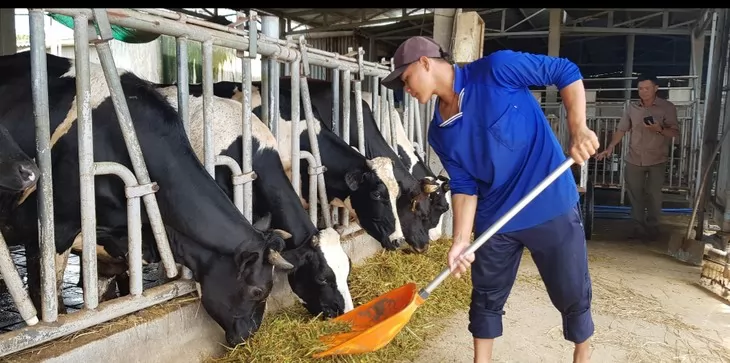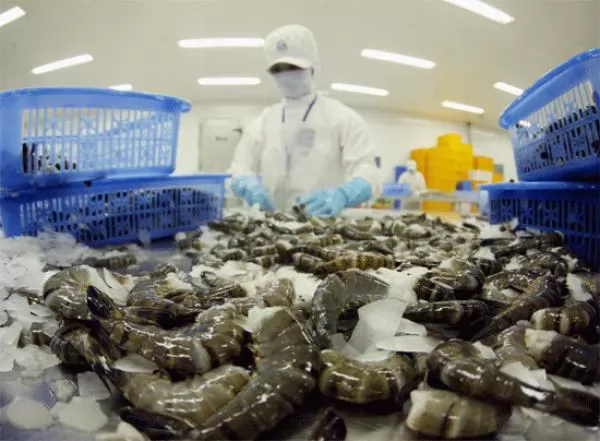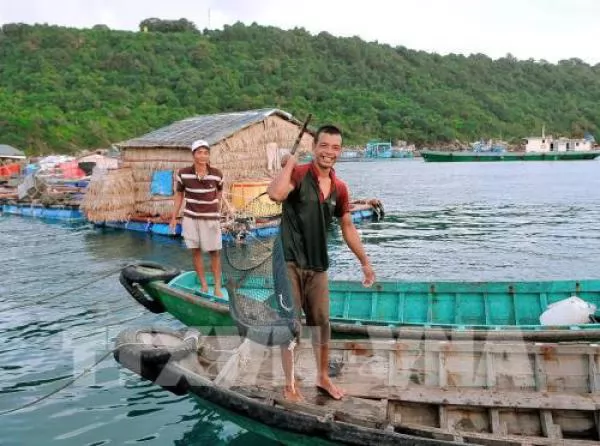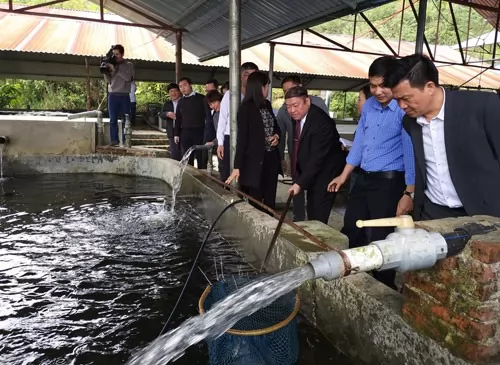Soc Trang's commune advances towards model new-style rural area

A dairy cow farm in Dai Nghia Thang hamlet in Dai Tam commune. (Photo: Ngoc Anh)
(VOVWORLD) - Dai Tam commune in My Xuyen district is one of the highlights in a new rural building in the Mekong Delta province of Soc Trang. Dai Tam, which was recognized as an enhanced new-style rural commune last year, is striving to become a model new-style rural area by the end of this year.
Dai Tam commune has 4,700 households with more than 20,000 people, 86% of whom are Khmer ethnic people, 1% Chinese ethnics, and the rest are Kinh people. Most of the people subsist on cattle-breeding and rice and crop farming.
Since it became a new rural commune in 2015, between 2016 and 2022 Dai Tam invested 8 million USD, one fourth of which was contributed by the locals, to implement enhanced new-style rural criteria.
After achieving the enhanced new-style rural standard late last year, Dai Tam immediately began the building of model new-style rural areas.
To date, it has completed about 80% of each criterion for model new-style rural building, said Truong Tan Lam, Deputy Chairman of the commune People's Committee, adding, there are 4 mandatory criteria for model new-style rural building in Soc Trang.
“First is to meet the enhanced new-style rural criteria which we already fulfilled. Second is that the per capita income must be 3,160 USD per year. Dai Tam’s current income is more than 2,700 USD per person per year. Third is to have a smart hamlet. Dai Tri hamlet is selected because it has achieved 9 criteria for a smart hamlet including all residents using the Internet, accepting non-cash payments, and installing cameras in the hamlet. Fourth is to meet the criteria on new rural culture for all villages and hamlets in the commune,” he said.
Dai Tam commune has 8 hamlets. “We already have 4 cultural hamlets and are preparing procedures to recognize the rest in November and December this year,” said Lam.
The provincial Department of Agriculture and Rural Development has surveyed and concluded that Dai Tam only needs to make a little more investment to be basically recognized as a model new-style rural area, he noted.
Dai Tam has attached great importance to applying science and technology to agricultural development.
Thanks to the application of an automatic irrigation system, the model of growing safe vegetables in Dai An and Dai Nghia Thang hamlets, for example, has reduced time and labor and saved water.
Dai Tam has promoted the cultivation of crops and rice and reserved 900 hectares for growing the ST25 rice variety which was named the world's best rice in 2019.
Lam Minh Ha, a Dai Tam farmer, told VOV, “My family has 2 hectares specializing in growing the ST25 rice variety. All our output products have been secured to be purchased. Each of the 2 rice crops in one year grown on 1,000 m2 profits 105 USD.”
Growing crops and vegetables is harder than growing rice. In Dai Tam commune, onion and scallion are the main crops.
“My family earns about 2,100 USD a year from planting onion and scallion on 1,000 square meters. It takes 3 months to grow scallion and 1.5 months for onions to be harvested,” said Ha.

An onion and scallion garden of Lam Minh Ha, a farmer in Dai Tam commune (Photo: Ngoc Anh)
Another advantage of Dai Tam commune is dairy cow farming. Diep Kinh Tan, Director of Tan Tai Loc Company and owner of a dairy cow farm in Dai Nghia Thang hamlet in Dai Tam commune, recalled that his company began to invest in dairy farming in 2014 and began operations after one year. The dairy cow farm was built with the support of Dutch Lady Vietnam.
“Our farm has also helped smallholder farmers. We buy breeding cows from Australia and the US and always have around 200 cows available at the farm. Each day, we collect nearly 900 kg of cow milk. Vinamilk Company is one of our customers. One kilo of cow milk is 67 US cents. We earn nearly 13,000 USD a month and gain a profit of 4,200 USD after deducting all expenses,” said Tan.
Truong Tan Lam, Deputy Chairman of the commune People's Committee, said to promote sustainable economic development, Dai Tam has issued a policy to support preferential loans for small and medium enterprises (SME).
“In recent years, the Bank for Social Policies of Soc Trang province has supported the locals with preferential loans worth nearly 1.7 million USD. The commune has taken advantage of the provincial financial resources to support SMEs and facilitated businesses in renting and buying land and growing grass to raise cows,” Lam said, adding, “Training courses on rice and cow farming techniques have been held. Dairy cow raising has helped reduce poverty. Poor and near-poor households now account for only 2.5%.”
Dai Tam has also paid special attention to transport infrastructure development. 5.6 km of the local roads have been paved.
Once completing the criteria for a model new-style rural area this year, Dai Tam will be the first commune in My Xuyen district to have met this target.
Ngoc Anh
Maybe you are interested

Solutions sought for $10b shrimp plan
A conference was held in the Mekong Delta province of Sóc Trăng on Thursday to discuss how to realise the US$10 billion shrimp export target by 2025 as requested by the Prime Minister.

Marine aquaculture brings high profits to Kiên Giang farmers
KIÊN GIANG - Breeding marine fish in floating cages has offered high profits for farmers in Kiên Giang Province's coastal areas and islands.

Lào Cai to set up agricultural speciality areas
LÀO CAI — Lào Cai Province should work with enterprises to establish large agricultural speciality zones and upgrade its infrastructure to enhance product value, according to a farming expert.





